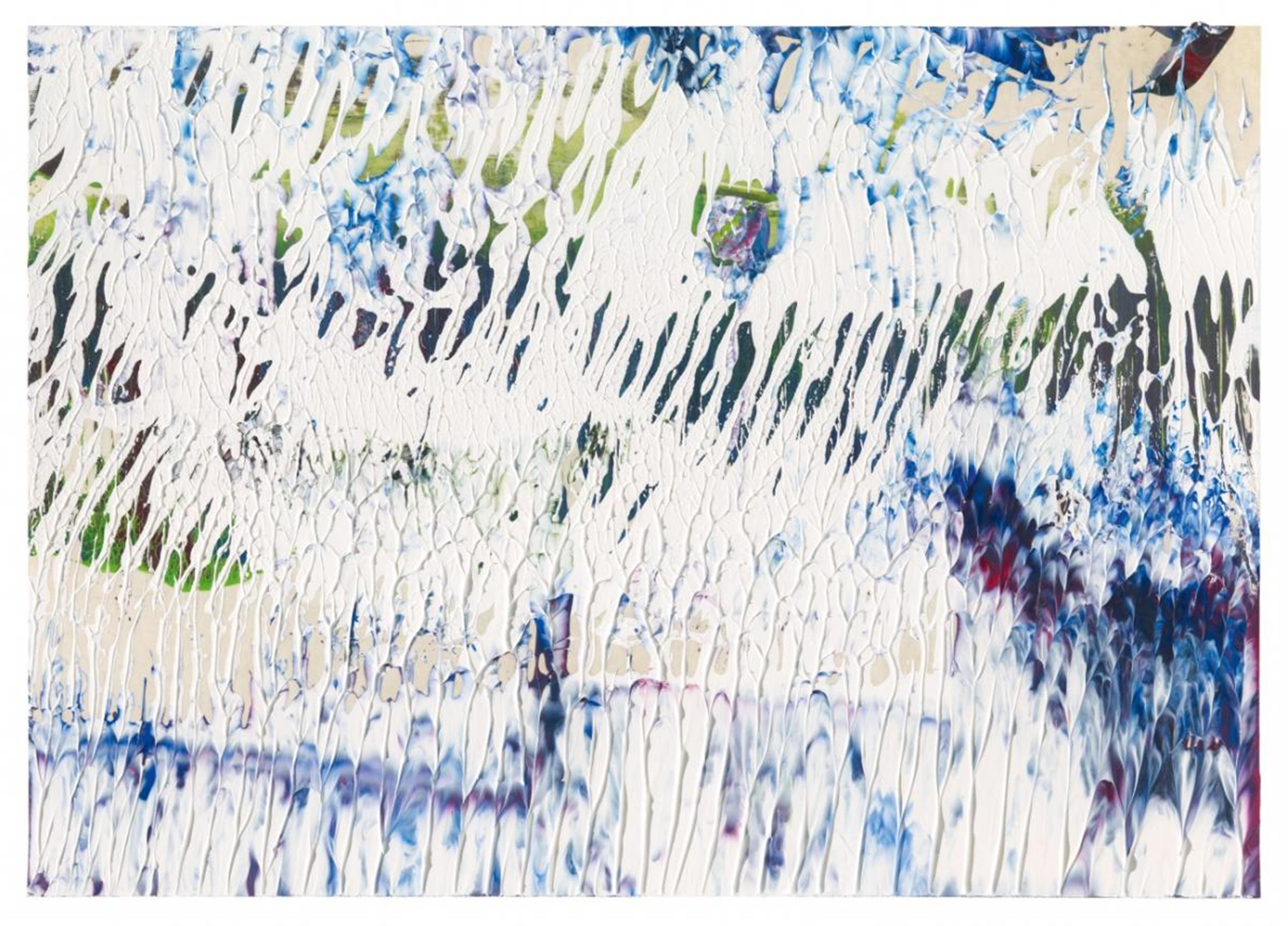Oil on chamois coloured, smooth card 21 x 29.8 cm, mounted on white card 40 x 49 cm, framed under glass. The reverse of the chamois coloured card signed and dated '3.3.94 Richter' and additionaly signed and dated 'Richter 3.3.94' on the card support.
Like a network, the entire sheet is covered by a polychrome layer of paint in a pattern reminiscent of honeycomb. The dominant colour is largely a rich white, with bluish-red streaks of paints moving through it along the edges. In the bottom right-hand corner the prevailing element is a mixture of rich berry tones that continue well into the centre of the painting. In a number of places the overall mass of paint branches out into graceful surface structures that stand out three-dimensionally from the surface, so that the layer of paint affords a glimpse of the underlying level of shimmering green.
In this painting Gerhard Richter combines techniques which are known to us both from his large canvas works and from his overpainted photographs: In his “Abstract Paintings” he places layer upon layer, using a squeegee, in a process which could take several weeks: “Whenever he reaches a certain stage, he questions it, so that he can destroy it again at the next stage and regain the original openness.” (Dietmar Elger, Gerhard Richter. Übersicht, in: Götz Adriani (ed.), Gerhard Richter. Bilder 1963-2007, Ausstellungskatalog (exhibition catalogue) Staatliche Kunstsammlungen Dresden und National Art Museum of China, Peking, Ostfildern 2008, p.43). In 'no. 3.3.94' Richter achieves this openness with only two layers: he started by applying an initial layer of green paint and then covered it with a second layer when it was dry. As this top layer did not provide consistent coverage but remained unbonded in numerous places, we are given a glimpse of the “picture behind the picture”. We may even feel that we can see something representational in the abstract background, perhaps a landscape. This effect reminds us of Richter's overpainted photographs in which he modifies the original image with oil paint. In doing so he uses the same technique as in this work on paper: With a sweeping movement, Richter would pull the piece of paper over one of those squeegees which he used for his canvases and which is now covered with a variety of paint residues. The final result eventually depends on the speed of his movement and the intensity of pressure applied to the paper. The fine branch structure that dominates this painting, especially in the topmost part, was created by reducing the wiping movements to a minimum and by cautiously applying the medium, i.e. the paper, to the paint and then lifting it off. (On this technique, see Markus Heinzelmann: Verwischungen. Die übermalten Fotografien von Gerhard Richter als Objekte der Betrachtung, in: Markus Heinzelmann (ed.), Gerhard Richter. Übermalte Fotografien, Ausstellungskatalog (exhibition catalogue), Museum Morsbroich, Leverkusen, Ostfildern 2008, pp.84/85).
Certificate
With written confirmation of authenticity from the studio Gerhard Richter, via email dated 18.09.2012.
Provenance
Aschenbach Galerie, Amsterdam (label verso); Private Possession, Germany

